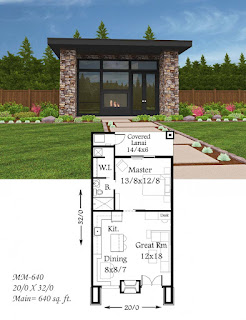Your Complete Guide to Conquering Home Woodworking Projects
So, you're itching to get your hands dirty and build something amazing out of wood? Fantastic! Woodworking is incredibly rewarding, whether you're crafting a simple shelf or tackling a complex piece of furniture. This guide will walk you through everything you need to know, from initial planning to the satisfying final sanding. Let's get started!
1. Planning Your Project: Dreams to Drawings
Before you even think about touching a saw, you need a solid plan. This isn't just about having a vague idea; we're talking about detailed blueprints, folks! Jumping in without a plan is a recipe for frustration (and possibly injury).
1.1 Choosing Your Project:
What do you want to build? A simple bookshelf? A rustic coffee table? A challenging rocking chair? Start with something manageable if you're a beginner. Don't get discouraged by ambitious projects right away. You can always tackle the more complex stuff later, once you've built up your skills and confidence.
1.2 Finding Your Inspiration:
Pinterest, Instagram, and woodworking websites are treasure troves of inspiration. Browse through countless projects and find something that sparks your interest. Don't be afraid to adapt designs to your needs and preferences. Maybe you love a particular design but want to change the dimensions to fit your space. That's perfectly fine!
1.3 Creating Your Plans:
Now for the crucial part – creating your plan. You can sketch it out by hand, which is a great way to get a feel for the project. However, using woodworking software (like SketchUp or Fusion 360 – many have free versions!) is often a much better approach, especially for more complex projects. This helps you visualize the project in 3D and ensure all your measurements are accurate. Remember to include detailed dimensions, material lists, and any special instructions you might need.
2. Gathering Your Tools and Materials: The Arsenal
Having the right tools makes all the difference. You don't need a massive workshop to start, but having a basic set of essential tools is key.
2.1 Essential Tools:
- Measuring Tape: Accurate measurements are crucial!
- Pencil: For marking cuts and assembly points.
- Hand Saw or Circular Saw: For cutting wood to size.
- Drill: For pilot holes and driving screws.
- Screwdriver (or Drill with bits): For fastening your project together.
- Clamps: To hold pieces together while the glue dries.
- Sandpaper (various grits): For smoothing out surfaces.
- Safety Glasses: Protect your eyes from flying debris.
- Ear Protection: Power tools can be loud!
As you progress, you might want to invest in more specialized tools, like a planer, jointer, or router. But for starting out, this basic set will get you a long way.
2.2 Selecting Your Wood:
Choosing the right type of wood is important, both for its aesthetic appeal and its workability. Consider factors like hardness, grain pattern, and cost. Pine is a popular choice for beginners due to its affordability and ease of working with. Hardwoods like oak and maple are more durable but can be more challenging to work with.
3. Building Your Project: From Plan to Reality
This is where the fun (and maybe a little frustration) begins! Remember to take your time, be patient, and double-check your measurements at every stage.
3.1 Cutting and Shaping:
Carefully cut your wood pieces according to your plans. Make sure your cuts are straight and accurate. Use a miter saw for precise angles if you have one. Always remember safety first – use appropriate safety gear and follow the instructions for your tools.
3.2 Assembly:
This is where your clamps become your best friends. Apply wood glue to the joints and clamp the pieces together firmly until the glue dries. Make sure everything is aligned properly before clamping. Follow the instructions you created earlier!
3.3 Finishing Touches:
Once the glue is dry and your project is assembled, it's time for sanding. Start with coarser grit sandpaper and gradually move to finer grits for a smooth finish. After sanding, you can apply a finish, such as paint, stain, or varnish, to protect and enhance the wood's beauty. Let the finish dry completely before handling your masterpiece.
4. Troubleshooting and Tips for Success
Even the most experienced woodworkers encounter problems along the way. Here are a few common issues and how to solve them:
- Wood Splitting: Drill pilot holes before driving screws into the wood to prevent splitting.
- Uneven Cuts: Use a sharp saw blade and ensure your workpiece is securely clamped.
- Glue Stains: Wipe off excess glue immediately before it dries.
Most Importantly: Don't be afraid to make mistakes! It's all part of the learning process. Every project teaches you something new, and soon you'll be crafting amazing things with ease.
Frequently Asked Questions (FAQs)
Q: What kind of wood is best for beginners?
A: Pine is a great choice for beginners because it's relatively inexpensive, easy to work with, and readily available.
Q: Do I need expensive tools to start woodworking?
A: No! You can begin with a basic set of hand tools and gradually add power tools as you gain experience and confidence.
Q: How do I prevent wood from warping?
A: Acclimate your wood to your workshop's environment before starting the project. This allows it to adjust to the humidity and temperature, reducing the chance of warping.
Q: What's the best way to clean up sawdust?
A: A shop vacuum is ideal, but a broom and dustpan work too! Always clean up after each session to keep your workspace organized and safe.
Q: Where can I find woodworking plans?
A: Websites, magazines, and books dedicated to woodworking are great resources. Pinterest and other similar sites also have tons of project ideas.
Happy woodworking!






























